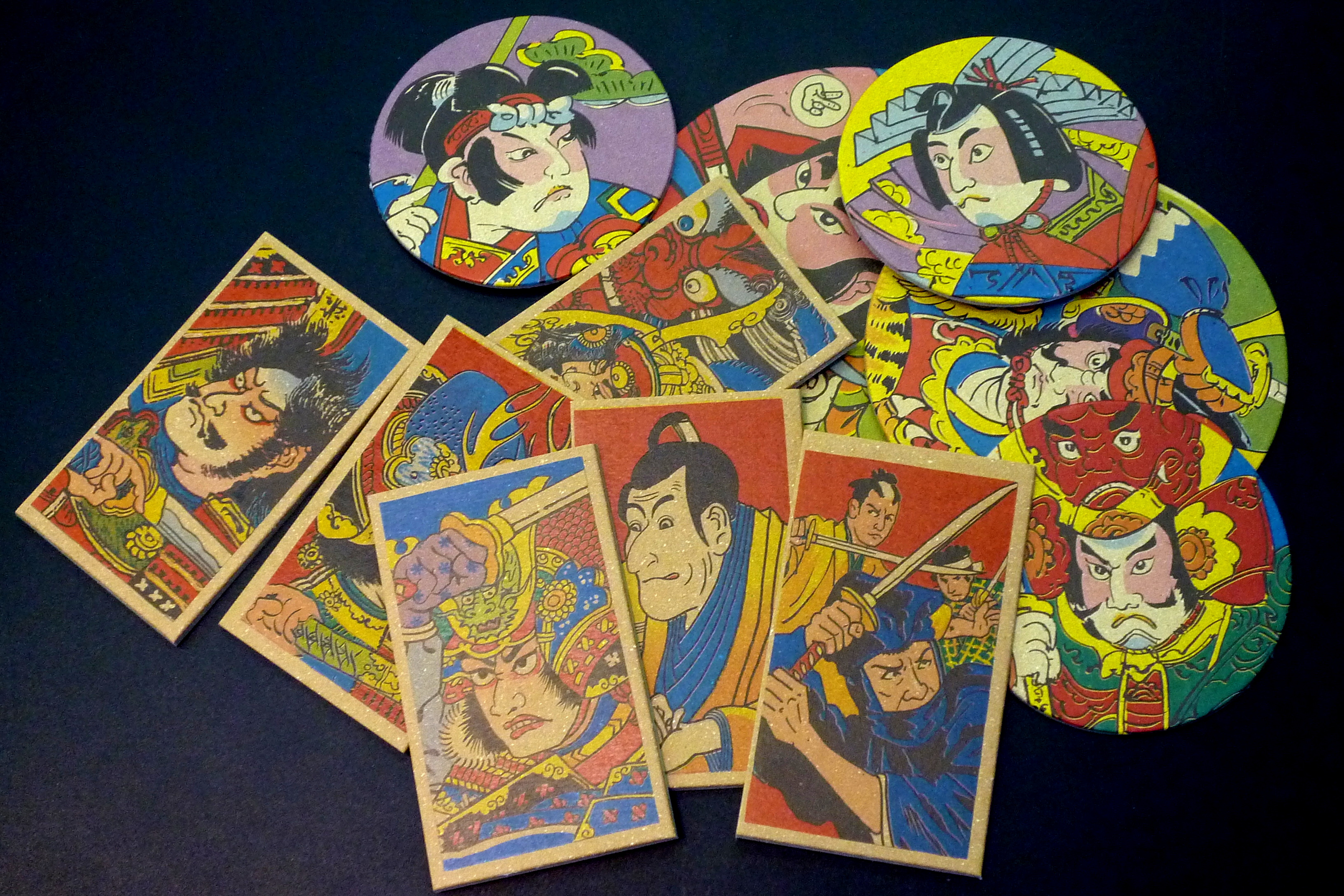Menko on:
[Wikipedia]
[Google]
[Amazon]
 ''Menko'' (, ), also known as Bettan or Patchin, is a Japanese
''Menko'' (, ), also known as Bettan or Patchin, is a Japanese
The Menko: From Youthful Battles to Diamond Glory
Children's games Japanese games Japanese card games
 ''Menko'' (, ), also known as Bettan or Patchin, is a Japanese
''Menko'' (, ), also known as Bettan or Patchin, is a Japanese card game
A card game is any game that uses playing cards as the primary device with which the game is played, whether the cards are of a traditional design or specifically created for the game (proprietary). Countless card games exist, including famil ...
played by two or more players. It is also the name of the type of cards used to play this game. Each player uses Menko cards made from thick paper or cardboard, printed on one or both sides with images from anime
is a Traditional animation, hand-drawn and computer animation, computer-generated animation originating from Japan. Outside Japan and in English, ''anime'' refers specifically to animation produced in Japan. However, , in Japan and in Ja ...
, manga
are comics or graphic novels originating from Japan. Most manga conform to a style developed in Japan in the late 19th century, and the form has a long history in earlier Japanese art. The term is used in Japan to refer to both comics ...
, and other works. A player's card is placed on the hardwood or concrete floor and the other player throws down his or her card, trying to flip the other player's card with a gust of wind or by striking his or her card against the other card. If he or she succeeds, he or she takes both cards. The player who takes all the cards, or the one with the most cards at the game's end, wins the game.Shūichi Katō, Chia-ning Chang; ''A sheep's song: a writer's reminiscences of Japan and the world'', University of California Press, 1999, p48
Menko has been popular since the Edo period
The , also known as the , is the period between 1600 or 1603 and 1868 in the history of Japan, when the country was under the rule of the Tokugawa shogunate and some 300 regional ''daimyo'', or feudal lords. Emerging from the chaos of the Sengok ...
. They were originally known as men'uchi (面打) and were made by putting clay in molds which were then baked. Its quick and simple rules have made it popular among children of all age groups. Because technique is just as important as power in this game, smaller children can compete fairly with older players.
The pictures on these cards reflect the popular culture of their time, and Menko cards from the past reflect important information about their era. In the Edo and early Meiji period
The was an era of Japanese history that extended from October 23, 1868, to July 30, 1912. The Meiji era was the first half of the Empire of Japan, when the Japanese people moved from being an isolated feudal society at risk of colonizatio ...
, images like ninja
A , or was a spy and infiltrator in pre-modern Japan. The functions of a ninja included siege and infiltration, ambush, reconnaissance, espionage, deception, and later bodyguarding.Kawakami, pp. 21–22 Antecedents may have existed as ear ...
and samurai
The samurai () were members of the warrior class in Japan. They were originally provincial warriors who came from wealthy landowning families who could afford to train their men to be mounted archers. In the 8th century AD, the imperial court d ...
were popular. Before World War II, the most popular images were of the military, like fighter planes and battleships. After the war, characters from anime
is a Traditional animation, hand-drawn and computer animation, computer-generated animation originating from Japan. Outside Japan and in English, ''anime'' refers specifically to animation produced in Japan. However, , in Japan and in Ja ...
and manga
are comics or graphic novels originating from Japan. Most manga conform to a style developed in Japan in the late 19th century, and the form has a long history in earlier Japanese art. The term is used in Japan to refer to both comics ...
were popular, as well as baseball
Baseball is a bat-and-ball games, bat-and-ball sport played between two team sport, teams of nine players each, taking turns batting (baseball), batting and Fielding (baseball), fielding. The game occurs over the course of several Pitch ...
players. Collectors of Japanese baseball cards collect baseball menko. In the late 1980s to early 1990s, Menko cards were decorated with holographs and sparkles.
See also
* Ddakji – similar Korean game * Milk caps – similar Western game *Omocha-e
Omocha-e (, "toy prints") is a genre of Japanese woodblock prints ukiyo-e created as picture books and toys for children. The genre was considered inferior to prints of kabuki actors (yakusha-e) or prints with beautiful women (bijin-ga).
There we ...
References
{{reflistExternal links
The Menko: From Youthful Battles to Diamond Glory
Children's games Japanese games Japanese card games